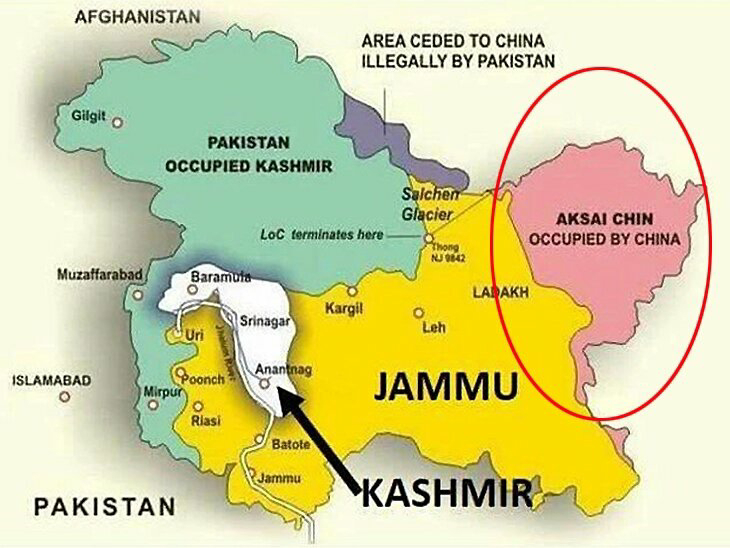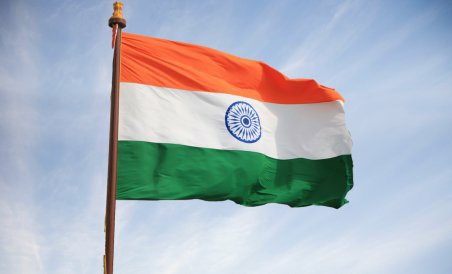The foreign policy of any nation always depends on certain determinants. These determining factors include historical, geographical, social and economic systems. This became the background of foreign policy. Let us now look at the overall journey of India's foreign policy. In the 75 years from 1947 to 2021, radical changes took place in Indian foreign policy. Let us divide our foreign policy into 3 sections for our convenience.
1) Nehruvian Idealism
2) Strategic Realism
3) Economic pragmantism
After we became independent in 1947, the biggest question facing Prime Minister Nehru was to establish a new foreign policy. At that time, our financial situation was not so good. Therefore, it would be beneficial for us to hold the hand of other powerful countries. At that time, India, which was a little on the side of Russia and China, was also fighting at the international level. In its initial policy, India was giving rational status to every country, in simple words, all countries are good and promote world peace. And we just want to get the best out of those countries. 'The only goal we have is to stick to our principles, our ethics'. This is where the idealistic policy begins. At that time the world was divided into two groups, USA and USSR. But we were determined not to join anyone. Secondly, maintaining autonomy in domestic affairs; And thirdly unity among nations that have recently gained independence. Based on these three pillars, our policy continued throughout the Cold War. But at the end, we leaned a little towards USSR.
India-China relations were not as bitter as they are now. I would say it wasn't bitter.
When China established its dominance over Tibet in 1949-1950, India ignored that issue saying it as 'China's internal affair'.
In 1950, the United States planned to grant permanent membership of the United Nations Security Council to India. But Prime Minister Nehru left that space for China. However it cannot be said that Nehru made that mistake at that time. Because the situation was different. Later on the Panchasheel Agreement was signed in 1954 in the presence of Prime Minister Nehru and the Prime Minister of China. The five-point agreement increased India's value in China's eyes. In an idealistic policy, we were expecting ideal behavior from other countries as well. But India's eyes soon opened. Within a few years, the disadvantages and loopholes of the idealistic policy began to be felt, and gradually it became necessary to adopt a realistic policy.
Strategic realism. In simple words, we don't expect to be idealistic, we just want to do what we really need to do. And the essence of this realistic policy, in a word, would be "national interest". Doing things that are in the interest of the nation or for the benefit of others, even in some places, setting aside ideal behavior. Achieving things that are in the national interest is strategic realism. In the idealistic policy, we were thinking only of principles, ethics, values, but according to this realistic policy, the national interest came first. I mean, there is no permanent friend, no permanent enemy. To illustrate this point, India accepted and granted asylum to the Dalai Lama, who withdrew from Tibet in 1959 after the signing of the 1954 Pact. And this step taken openly does not bode well for China. Even though Nehru had taken many decisions in favor of China till date, he never thought that China could invade. And their claim was rejected in 1961. In the same war, China captured Aksai Chin, a part of India. Even today, India has not been able to hold back.
Former Foreign Minister Lal Bahadur Shastri then took over as Prime Minister and also took steps to improve foreign policy. He spoke on the issue of Vietnam to a powerful country like the United States. Even during the Indo-Pakistan war of 1965, under the pressure of the United Nations, Pakistani President Ayub Khan proposed a ceasefire and Shastri became very popular across the country due to his strong decision against Pakistan. After this, Indira Gandhi implemented a realistic policy. It came to fruition in 1971. If India at that time had adopted an idealistic rather than a realistic policy without looking at the national interest then even today India would be surrounded by West Pakistan and East Pakistan. Indira Gandhi took a step towards nationalism or realism and Bangladesh became independent.
After that, even in the time of Rajiv Gandhi, India was running with realistic thinking. When the civil war broke out in Sri Lanka in 1987, the situation was such that the Liberation Tigers of Tamil Eelam or Tamil Tigers, an organization in Sri Lanka, had demanded a separate Tamil nation in view of the atrocities or discrimination against the Tamil people. Now any outside power could take advantage of the internal conflict in Sri Lanka to build its military base there. The biggest threat was to India. Also, the demand for a Tamil nation was likely to undermine India's sovereignty. So Rajiv Gandhi sent Indian Shanti Sena to Sri Lanka. After staying in Sri Lanka for 3 years, Shantisena conducted many operations and tried to establish peace. This decision of Rajiv Gandhi has also become a milestone in the foreign policy of today.
Commenting on foreign policy shift is gigantic task. We have concluded 2 policy shifts in this part. The last and most important 3rd policy shift that is Economic Pragmantism, we will be continuing in part 2.
See you in next part!!!






Nice blog 👍
ReplyDeleteThank you 😊
DeleteGood work keep it up......nicely explained
ReplyDeleteThank you 😊
DeleteGreat ... It'll help me in GS (IR)Paper.
ReplyDeleteGlad to hear that, wishing you good luck😊
Delete👍
ReplyDelete😊
DeleteVery well explained
ReplyDeleteThank you 😊
Delete